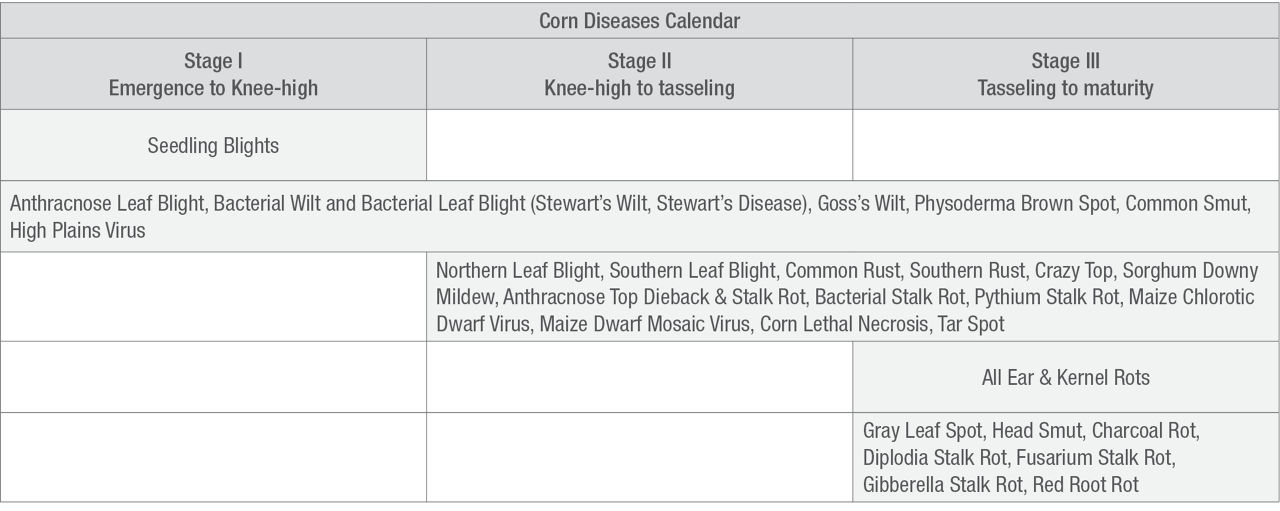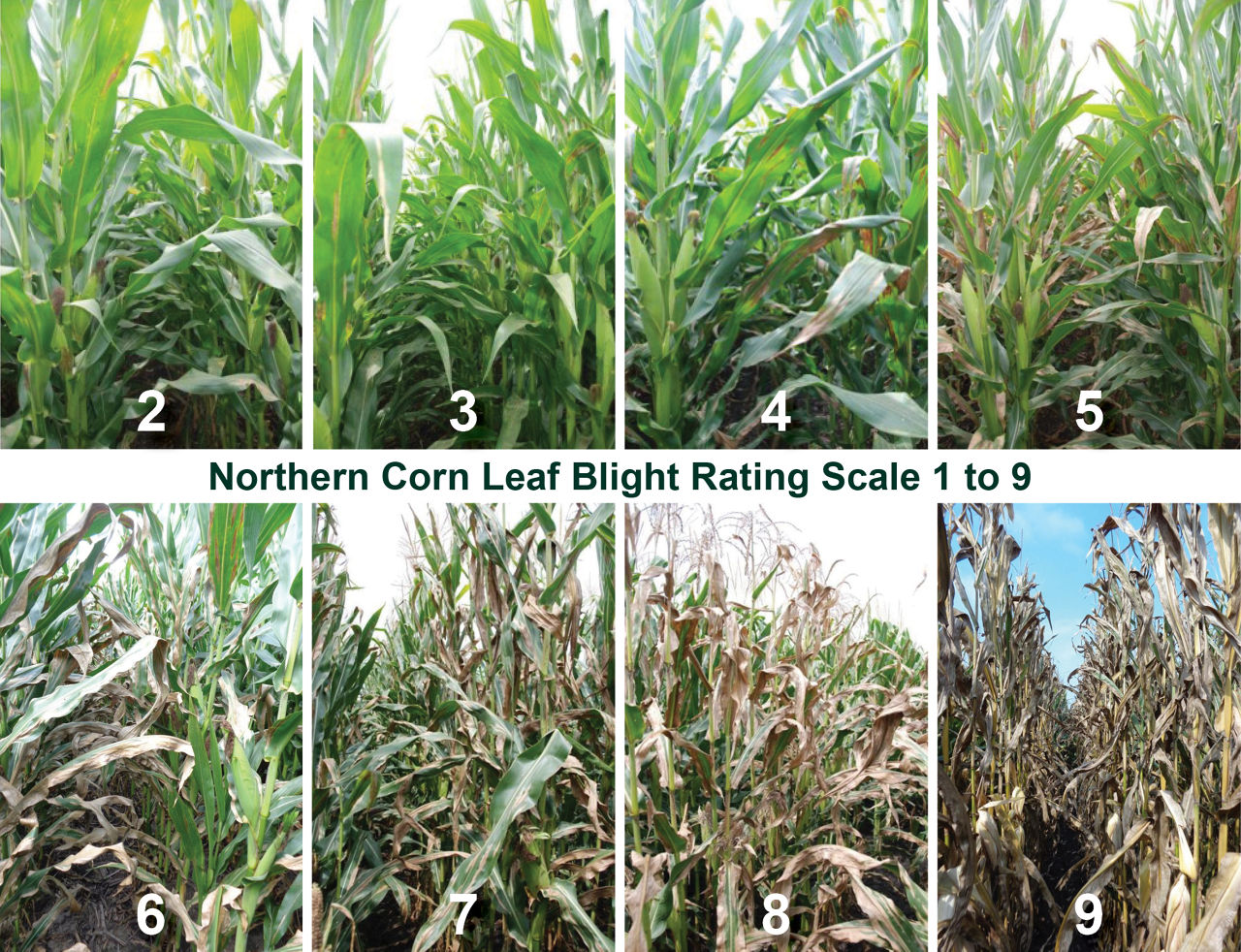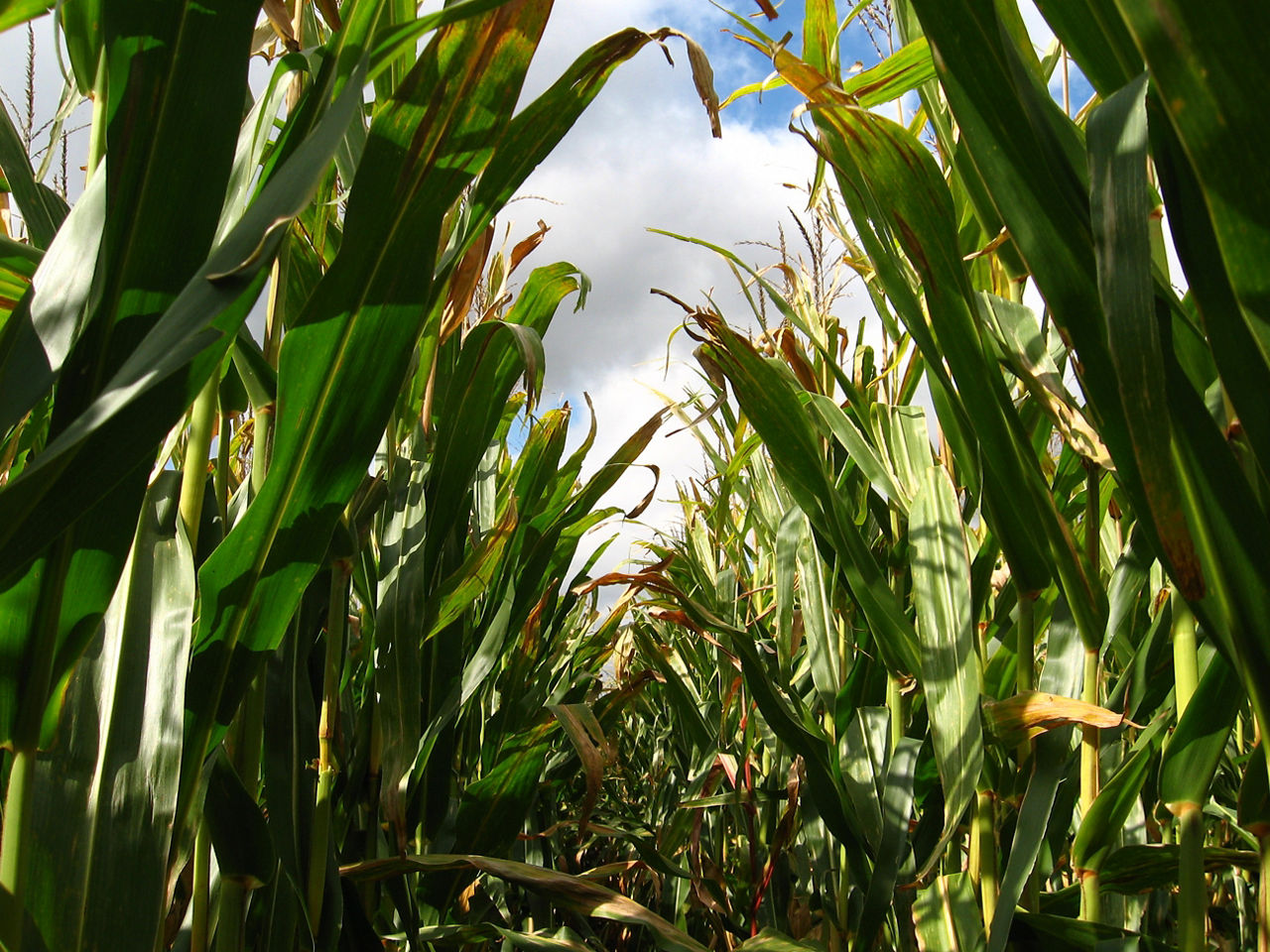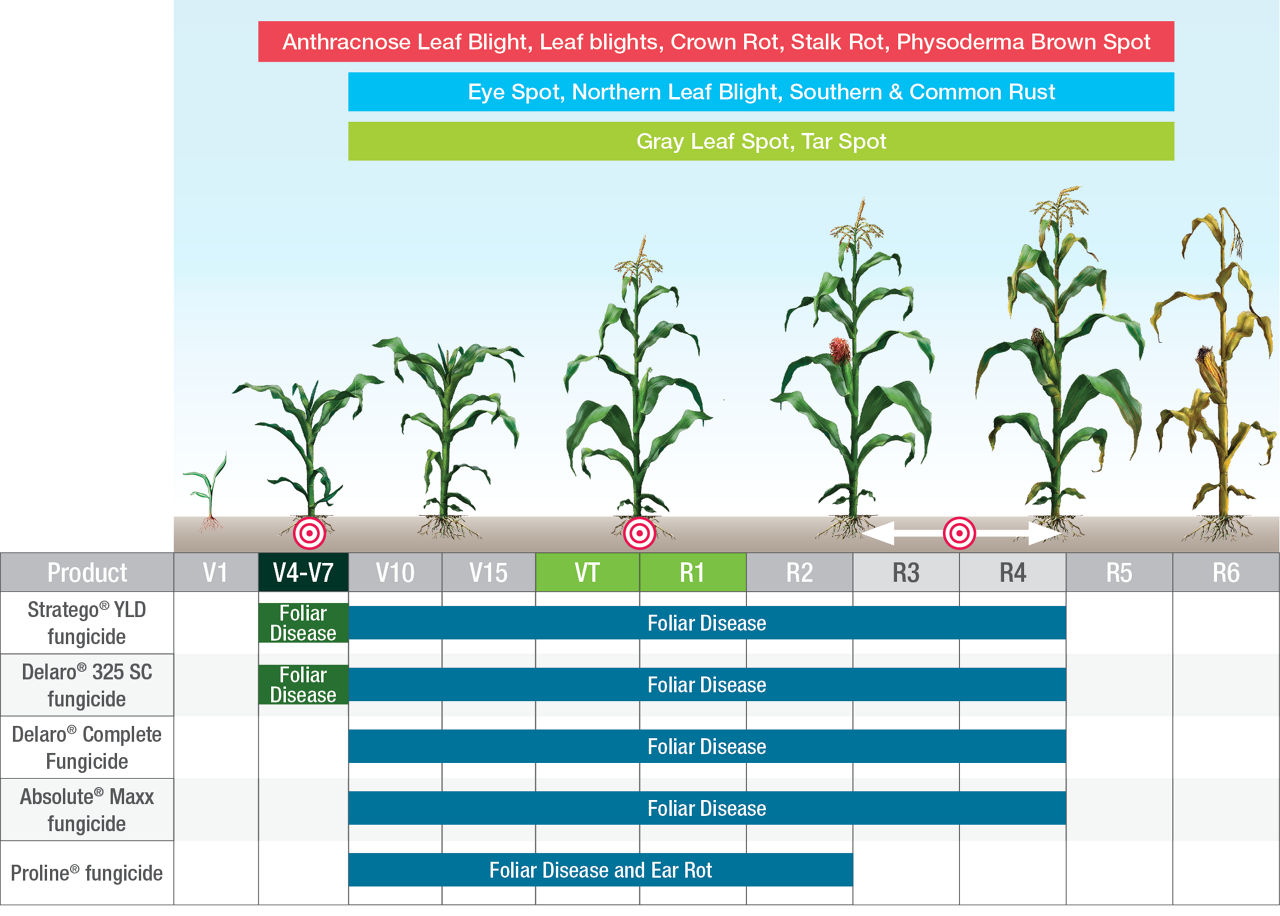5 MIN READ
Managing Corn Diseases
August 31, 2023
Introduction
Disease management is necessary to protect yield potential in any crop. In corn, integrated disease management tactics include corn product selection, crop rotation, residue management, and fungicide applications. Fungal leaf blights, stalk rots, and ear rots are the major categories of diseases affecting corn.1 Crop scouting is the backbone for all pest management programs. Corn should be monitored for evidence of diseases during each field visit. Understanding the potential timeline when specific diseases may show up in fields can help target scouting and management strategies. The following calendar can be used as a guideline for scouting corn diseases. The specific time for scouting can be affected by planting date and growing degree day accumulation (Table1).
Table 1.

Corn Product Selection
The first line of defense against corn diseases is tolerant corn products, especially in corn-on-corn rotations. Products are evaluated for tolerance to diseases that are common in each geography. Corn products are rated for resistance relative to known susceptible and resistant products using a 1 (best) to 9 (worst) rating system (Figures 1 and 2). Your seed representative can help with selecting a product with appropriate levels of resistance or tolerance to specific diseases.


In corn-on-corn rotations, opt for products with high yield potential, good resistance to leaf and stalk diseases, as well as good insect protection, and good emergence and seedling vigor traits. Diseases such as seedling blights, gray leaf spot (GLS), northern corn leaf blight (NCLB), many common stalk and ear rots, and in some areas Goss’s Wilt are all potentially more severe in corn-on-corn production situations.
Crop Rotation and Residue Management
Many common corn diseases survive on infected corn residue. Crop rotation, tillage and residue management help to naturally reduce the level of many pathogens from crop residue and the soil by decreases inoculum levels which helps reduce the risk of some disease development. Surface residues also impact the soil environment (cooler soil temperatures, higher soil moisture), which can foster disease development. While crop rotation and residue management can help reduce the potential for some corn diseases, corn diseases such as Goss’s Wilt, NCLB, tar spot and southern rust can be blown into corn fields from adjacent fields or even from long distances, depending on the disease.
Seed Treatment Fungicides
Seed treatment fungicides are a critical component of an integrated disease management strategy in corn. When corn is between germination and seedling establishment, protection against fungi that cause seed decay, seedling blight, and damping-off may be needed. Seed treatment fungicides help provide protection from these issues, particularly in high residue, cold, wet and/or compacted soils, or that are excessively dry. These environmental conditions can slow germination and emergence, leaving seeds and seedlings more susceptible to attack. The fungicides available in Acceleron® BASIC Seed Applied Solutions protect against the top three seedling diseases including Fusarium, Pythium, and Rhizoctonia solani. Acceleron® ELITE Seed Applied Solutions also protects against these soil-borne diseases and also helps to reduce the infections caused by Colletotrichum graminicola. Acceleron® Seed Applied Solutions products also contain insecticides that protect against early season insect damage. These may contribute to seedling disease management by protecting against root feeding insects, which can create wounds for fungal infection.
Considerations for Foliar Fungicide Applications
Foliar fungicides are an important management option for fungal diseases. Plant health aspects such as photosynthetic capability, stress tolerance, standability, and grain quality can all be impacted when fungal diseases become established. A properly timed foliar fungicide application may greatly improve overall plant health and help protect yield potential.
Disease development in corn around the tasseling stage of growth (VT) can result in yield loss, particularly if favorable weather conditions support continued infection of leaves around and above the ear. Foliar diseases of corn are a concern when they develop early and progress up the plant before grain fill is complete. Some diseases to watch for include northern corn leaf blight (NCLB), gray leaf spot (GLS), Southern Rust, eyespot, tar spot, and Anthracnose leaf blight. There are several Bayer fungicides labeled for use in corn that can help manage several of the foliar fungal diseases (Figure 3). Fungicides are not effective on bacterial diseases such as Goss’s wilt.

Fungicides typically work better at preventing rather than curing disease. Specifically, GLS lesions may take up to two weeks to become visible after infection. For that reason, scouting when weather conditions favor disease development is important. Begin scouting fields for foliar disease symptoms just before tasseling and continue through the grain filling stages of growth. Rapid grain filling occurs from R2 (blister) to late R5 (full dent). It is especially important to protect the ear leaf, and those leaves above, as corn plants enter reproductive stages of growth. Examine the ear leaf and leaves above and below the ear at several locations throughout a field. If disease is present on a majority of the leaves, a fungicide application may be necessary (Figure 4).

Harvest restrictions vary by fungicide that is being considered for use. Depending on the product applied, fungicide harvest restrictions for field corn harvested for grain vary from 7 to 45 days or the R3 (milk) growth stage. Restrictions may also vary for other types of corn (sweet, seed or popcorn, etc.), and corn for other uses such as forage or fodder.2 Always read and follow the product label instructions.
Sources:
1 Management of Corn Diseases in New York. Cornell College of Agriculture and Life Sciences (CALS). Corn disease management. https://cals.cornell.edu/field-crops/corn/diseases-corn/management#:~:text=Integrated%20corn%20disease%20management%20involves,when%20warranted%20by%20disease%20risk.
2Telenko, D. 2021. Diseases of Corn: Fungicide Efficacy for Control of Corn Diseases. Purdue University Extension. Botany and Plant Pathology. PB-150-W. https://mdc.itap.purdue.edu/item.asp?itemID=22746.
Web sources verified 04/21/23. 1211_70259